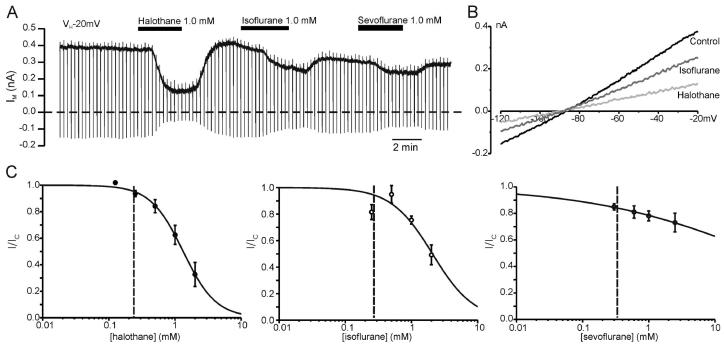Fig. 3.
Halogenated volatile anesthetics inhibit adenosine triphosphate–sensitive K+ (KATP) channels. (A) Whole cell recording at a holding potential of −20 mV from an HEK293 cell transfected with Kir6.2 and SUR1. The dashed line indicates the zero-current level. Halothane, isoflurane, and sevoflurane (1 mm each) were bath applied as indicated by the horizontal bars. Each drug reversibly inhibited the whole cell KATP current. (B) Current–voltage relations taken from a recording as that shown in A demonstrating that the current inhibited by the volatile anesthetics has a reversal potential near EK. (C) Concentration–response curves of the inhibitory effect of halothane (n = 4–8), isoflurane (n = 3–5), and sevoflurane (n = 3–8) on whole cell KATP currents. The current in presence of the drug (I) is expressed as a fraction of the current in its absence (IC). The solid lines describe the best fit with a Hill equation using Ki = 1.32 mm and Hill coefficient (h) = 1.75 for halothane, Ki = 2.08 mm and h = 1.39 for isoflurane, and Ki = 47 mm and h = 0.34 for sevoflurane. In each case, it is assumed that complete inhibition of the KATP current could theoretically be achieved with high enough concentrations of the anesthetic. One minimum alveolar concentration is indicated by the vertical dashed line in each graph.

